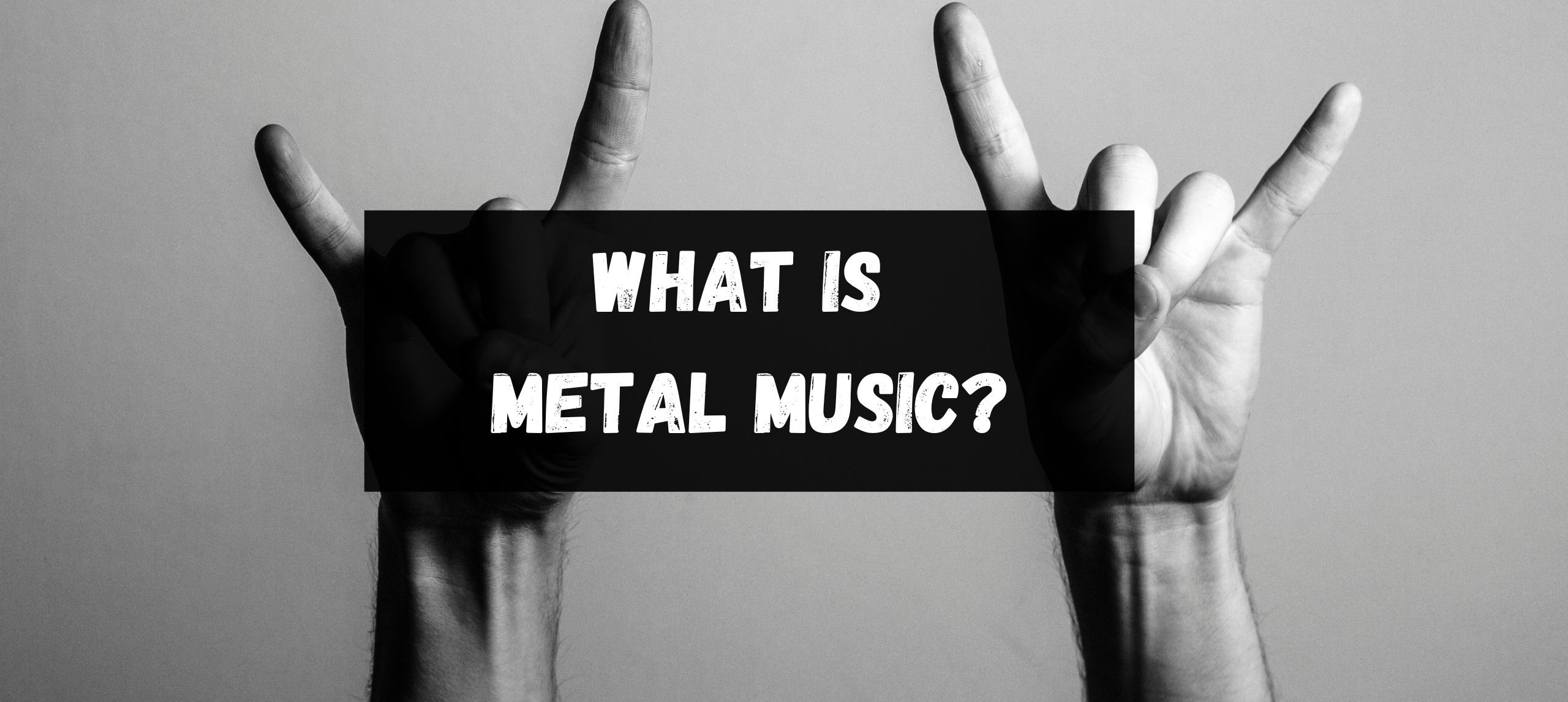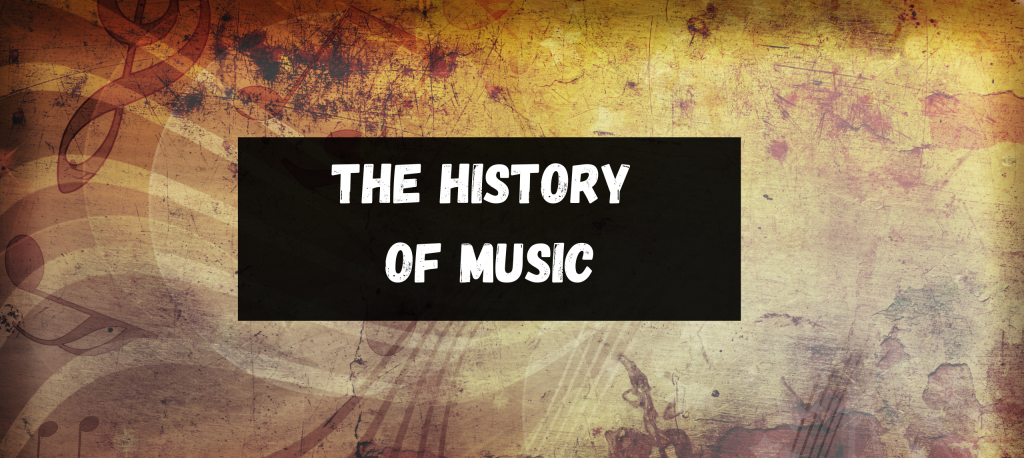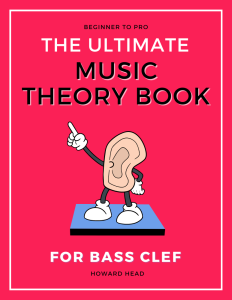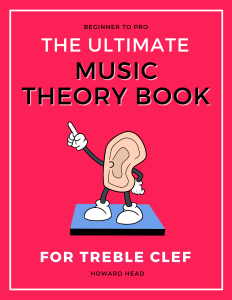August 28, 2023
Howard
Metal music is a genre of rock music known for its powerful and intense sound, often characterised by amplified distortion, extended guitar solos, emphatic beats, and overall loudness. Emerging in the late 1960s and early 1970s, it draws influence from blues and psychedelic rock, creating an aggressive and rhythmically complex musical experience. With various subgenres, from heavy metal to death metal, it has become a significant and influential part of the global music landscape.
Whether you’re a seasoned headbanger or new to the genre, this article promises an exciting journey through the evolution, key figures, and defining characteristics of metal music. There’s much more to metal than meets the ear, so stay with us for a compelling read that will resonate.
Defining the Essence of Metal Music
The Fundamentals of Metal Sound
Musical Elements
Metal music isn’t merely a collection of loud noises; it’s an art form with distinctive musical elements. The genre typically incorporates heavy guitar riffs, intense drumming, powerful vocals, and a dense bass sound. Guitar solos are often intricate and extended, while the overall composition can range from musical to dissonant. The orchestration can be complex, providing both intensity and depth to the sound.
Lyrical Themes
The lyrical content of metal music is as diverse as its sound, ranging from socio-political commentary to mythological narratives. The themes of rebellion, individualism, existentialism, and fantasy are frequently explored. Unlike many mainstream genres, metal often delves into darker and more profound subjects, offering listeners an emotionally rich experience.
Common Misconceptions and Clarifications
Metal music often falls victim to numerous misconceptions, the most prevalent being that it’s a chaotic cacophony. Some label it as violent or nihilistic, failing to recognise the artistry and thematic depth beneath the surface. It’s essential to approach metal with an open mind, recognising its complex layers and the broad spectrum of expressions that transcend stereotypes.
How It Differs from Other Genres
Metal music stands apart from other genres through its unique combination of musical complexity, emotional intensity, and thematic diversity. While sharing some common ground with rock, the amplified distortion and intricate arrangements distinguish metal, giving it its own character. From soft ballads to aggressive anthems, metal’s broad range offers something for every musical palate.

Historical Journey of Metal Music
Origins and Early Influences
The Birth of a Genre
The roots of metal music can be traced back to the late 1960s when bands like Black Sabbath and Led Zeppelin began experimenting with heavier sounds. They laid the groundwork for what would soon become a revolutionary musical movement by amplifying blues-based rock and infusing it with darker lyrical themes.
Early Influences
Various musical styles influenced the pioneering metal bands, including blues, classical music, and psychedelic rock. The fusion of these elements gave rise to a simultaneously intense, intricate, and passionate genre.
The Golden Era – 70s and 80s
A Time of Exploration
The 70s and 80s are often considered the Golden Era of metal music. During this time, bands like Iron Maiden, Judas Priest, and Metallica further defined the genre’s sound, each adding their unique touch. This period also saw the emergence of subgenres such as glam metal, thrash metal, and power metal.
Cultural Impact
The Golden Era wasn’t just a musical phenomenon; it was a cultural movement resonating with youth worldwide. The rebellious spirit, captivating performances, and groundbreaking albums became symbols of a generation.
The 90s and the Rise of Subgenres
Diversity in Sound
The 90s witnessed an explosion of creativity within metal music, giving birth to many subgenres. From the intense sound of death metal to the melancholy strains of goth metal, the genre’s landscape became richer and more diverse. Bands like Nirvana and Pantera took the world by storm, each contributing to the genre’s evolution.
The Subgenre Revolution
With subgenres like grunge, nu-metal, and industrial metal gaining prominence, the 90s offered a variety of sounds for different tastes. The fusion with other musical styles kept metal fresh and innovative.
Modern Evolution and Trends
Continued Growth
In the modern era, metal continues to evolve, adapting to new musical trends while retaining its essence. Bands like Slipknot, Ghost, and Bring Me the Horizon have helped carry the torch, each carving their path within the genre.
Global Impact
Today, metal music is a global phenomenon, transcending cultural and geographical boundaries. The genre’s influence can be seen in contemporary music, fashion, and art, showcasing its enduring appeal.
The Many Faces of Metal: Exploring Subgenres
Metal music is a complex genre that has given birth to numerous subgenres over the years. Each subgenre carries its own distinct sound, culture, and fan base. Let’s embark on a journey to explore the rich and multifaceted world of metal subgenres, unravelling their unique characteristics and influence.
Heavy Metal
The Classic Sound
Heavy Metal, often considered the foundational subgenre, is known for its thunderous riffs, soaring vocals, and powerful drumming. Iconic bands like Black Sabbath and Judas Priest are credited with shaping this monumental style.
Power Metal
Anthems of Glory
Characterised by uplifting melodies, intricate guitar work, and operatic vocals, Power Metal is all about anthems that stir the soul. Bands like Helloween and Blind Guardian have mastered this style, offering a blend of fantasy-themed lyrics and musical virtuosity.
Thrash Metal
Aggression Unleashed
Thrash Metal takes the intensity up a notch with rapid tempos, aggressive riffs, and socio-political themes. Pioneers like Metallica and Slayer have left an indelible mark on this subgenre, forging a brutal and articulate sound.
Glam Metal
Rock Meets Glamour
Glam Metal combines metal’s heavy sound with glam rock’s flashy aesthetics. With its catchy hooks and glamorous image, bands like Mötley Crüe and Poison defined the Glam Metal scene, especially during the 80s.
Black Metal
The Dark and Mystical Realm
Black Metal is one of the most intense subgenres, distinguished by its raw sound, shrieking vocals, and often controversial themes. Acts like Mayhem and Burzum have become infamous within this space, pushing musical and cultural boundaries.
Death Metal
The Heaviest of the Heavy
Death Metal is renowned for its guttural vocals, complex instrumentation, and often gruesome lyrical content. Bands like Cannibal Corpse and Death represent this extreme metal branch, showcasing technical mastery and a willingness to explore dark themes.
Additional Notable Subgenres
Goth Metal, Rap Metal, and More
From the sad strains of Goth Metal to the fusion of Rap and Metal, the genre’s landscape is ever-expanding. These subgenres continue to enrich the tapestry of metal music, each adding a unique flavour.
Iconic Metal Tracks and Their Impact
Metal music has given birth to some of music history’s most enduring and influential tracks. These songs have not only defined the genre but also profoundly impacted culture and the music industry. Let’s embark on a rhythmic journey through iconic metal tracks, understanding their context, analysing their musicality, and exploring their everlasting influence.
Exploration of 9-10 Major Hits
“Whole Lotta Love” by Led Zeppelin
- Analysis and Context: An electrifying blend of blues and rock, this track helped usher in the complex rock movement, setting the stage for heavy metal’s emergence.
- Influence on the Genre and Culture: Its innovative sound inspired countless bands, making it a timeless classic that continues to resonate with audiences.
“War Pigs” by Black Sabbath
- Analysis and Context: With its anti-war message and heavy, doom-laden sound, “War Pigs” is a seminal track that defined the early days of metal.
- Influence on the Genre and Culture: The song’s socio-political commentary set a precedent for metal as a platform for societal critique.
“Enter Sandman” by Metallica
- Analysis and Context: A hallmark of the thrash metal movement, “Enter Sandman” showcases Metallica’s signature blend of aggression and melody.
- Influence on the Genre and Culture: Its crossover appeal helped metal reach new audiences, solidifying its place in mainstream culture.
“Hallowed Be Thy Name” by Iron Maiden
- Analysis and Context: Known for its storytelling lyrics and intricate musicianship, this track is a quintessential example of the New Wave of British Heavy Metal (NWOBHM).
- Influence on the Genre and Culture: Iron Maiden’s unique blend of literary and historical themes continues to inspire bands across various metal subgenres.
“Crazy Train” by Ozzy Osbourne
- Analysis and Context: A solo hit from the “Prince of Darkness,” this song’s catchy riff and powerful vocals helped cement Ozzy’s legacy beyond Black Sabbath.
- Influence on the Genre and Culture: Ozzy’s larger-than-life persona has left an indelible mark on metal culture and music entertainment.
Additional Tracks and Their Impact
Exploration of iconic tracks such as “Highway Star” by Deep Purple, “Heaven and Hell” by Black Sabbath, “Shout at the Devil” by Mötley Crüe, and others further enrich our understanding of metal’s varied soundscape and its impact on the musical world.
Profiles of Leading Metal Artists
The pulsating heart of metal music beats through its iconic artists. These musicians’ virtuosity, creativity, and relentless passion have carved a niche for metal in the annals of music history. From groundbreaking innovations to unforgettable live performances, these artists have shaped the genre, inspired new talent, and received international acclaim. Join us in exploring the masters of metal and their enduring legacies.
Contributions and Innovations
Ozzy Osbourne
- The Prince of Darkness: A founding member of Black Sabbath, Ozzy’s macabre theatrics and distinctive voice have earned him a legendary status in the metal community.
- Innovations: Ozzy’s fusion of dark themes with hard rock helped lay the foundations for the genre.
Ronnie James Dio
- The Voice of Metal: Known for his powerful vocals and mystical lyrics, Dio’s work with bands like Rainbow and Black Sabbath has left an indelible mark on metal.
- Innovations: Dio’s signature stage presence and contributions to the power metal subgenre made him influential.
James Hetfield
- Thrash Metal Icon: As Metallica’s lead vocalist and rhythm guitarist, Hetfield’s aggressive playing style has become synonymous with thrash metal.
- Innovations: His complex riffing and songwriting have set new standards for technical proficiency in metal.
Achievements and Recognition
Bruce Dickinson
- The Air-Raid Siren: The lead singer of Iron Maiden, Dickinson’s operatic vocal style and engaging stage presence have made him one of metal’s most recognisable figures.
- Awards and Honours: Multiple gold and platinum albums and critical acclaim testify to his monumental success.
Ritchie Blackmore
- The Guitar Wizard: A key Deep Purple and Rainbow member, Blackmore’s guitar mastery has influenced countless musicians.
- Awards and Honours: Induction into the Rock and Roll Hall of Fame underscores his lasting impact on music
Influence on Emerging Artists
The Legacy Lives On
- Mentoring the Next Generation: Many contemporary artists cite these metal legends as inspiration, continuing the tradition of heavy, energetic, and complex music.
- A Continuing Tradition: Their styles, themes, and techniques continue to be explored and expanded by new talent, ensuring the genre’s continued growth and vitality.
The stories of these metal giants are but a glimpse into a rich and diverse world filled with powerful music and magnetic personalities. The genre’s unique blend of sound and imagery continues to fascinate and evolve. Intrigued? Keep reading to uncover more about how metal music resonates globally, connects with fans, and continues to push the boundaries of musical expression.

The Cultural and Global Footprint of Metal Music
Metal music has not just been a storming genre that’s captured the hearts and minds of millions; it’s a cultural phenomenon that has left a lasting impact on societies worldwide. It has faced criticism, influenced modern music culture, and creatively interacted with various art forms. The powerful beats and profound lyrics have reverberated beyond the stage, influencing social movements, fashion, and even philosophical thought. Let’s explore this fascinating world and discover how metal music has shaped our global culture.
Social Perception and Criticism
Embracing the Controversial
- Misunderstood Expression: Often seen as aggressive and rebellious, metal music has faced criticism and misunderstanding from those outside the genre. Its intense sound and often dark themes have led to misconceptions.
- Societal Impact: Despite the controversies, metal has fostered a robust and inclusive community of fans, often misunderstood but bonded by shared passions.
The Intellectual Side of Metal
- Philosophy and Literature: From references to classical literature to complex philosophical themes, metal has proved to be a genre of depth and intellectual exploration.
- The Quest for Understanding: The genre has prompted academic studies and scholarly examination, reflecting its complexity and cultural importance.
Role in Shaping Modern Music Culture
Influencing Mainstream Music
- From Underground to Spotlight: Once a niche genre, metal’s influence has permeated mainstream music, affecting styles, production techniques, and performance.
- Legacy of Innovation: Pioneering new sounds and daring to challenge musical norms, metal has been instrumental in pushing the boundaries of music itself.
Fashion and Lifestyle
- A Style of Its Own: Metal has spawned a distinctive fashion style characterised by leather, studs, and band merch, reflecting a lifestyle and an identity.
- Beyond Music: It’s not just a genre; it’s a way of life for many fans, shaping attitudes, values, and even political views.
Interaction with Other Genres and Art Forms
A Fusion of Sounds
- Crossing Boundaries: Metal has interacted and blended with various other genres, from classical to rap, resulting in innovative subgenres and creative musical expressions.
- Collaboration and Experimentation: Many artists have collaborated across genres, creating unique compositions that expand the horizons of music.
Metal in Visual Arts and Cinema
- A Cinematic Experience: Metal’s dramatic and intense nature has made it a popular choice in films, adding depth and emotion to cinematic experiences.
- Art Inspired by Sound: Metal’s themes have inspired visual art, from album covers to exhibitions, proving that its influence goes beyond the auditory.
Concluding Remarks
As we explore metal music to a close, it’s clear that this genre is more than just amplified guitars and thundering drums. It’s a reflection of rebellion, of questioning authority, and of raw, unfiltered emotion. The journey we’ve taken delves deep into the heart of metal, offering an understanding of its multifaceted identity.
Metal, at its core, is a melding of intense musical complexity and profound thematic depth. It’s a genre that is open to the extremes, neither in sound nor in message. It’s as much about individual expression as a collective sense of belonging.
Decades on from its inception, metal’s allure remains as powerful as ever. Why? It may be because it offers an escape, a catharsis, a way to make sense of the world. Or it’s the unyielding spirit of metalheads and their unwavering dedication to the music they love to keep the flame burning brightly.
The world of metal music is ever-evolving. With new subgenres emerging and technology playing an increasingly significant role, the future promises even richer sonic landscapes. There’s no doubt that metal will continue to reflect the times, addressing societal changes and issues with the same zeal it always has. Until the next headbang!
Get Your Paws in These

Howard Head
I turn confused bass enthusiasts into bass gods through a simple and logical process.

















